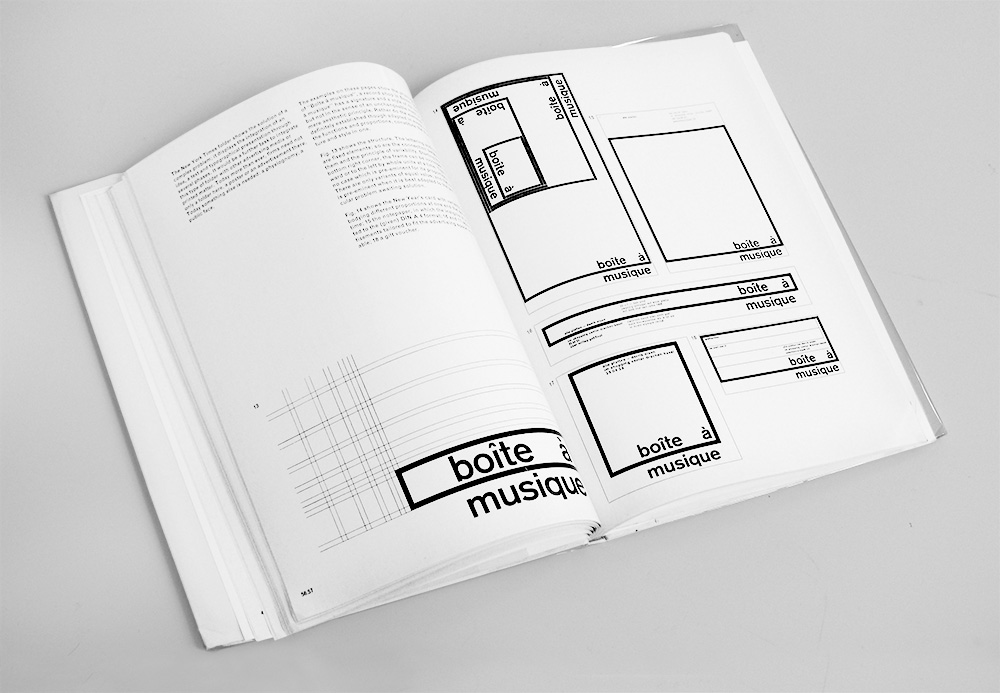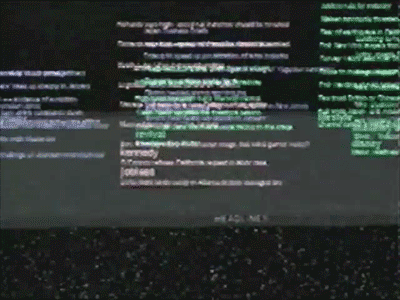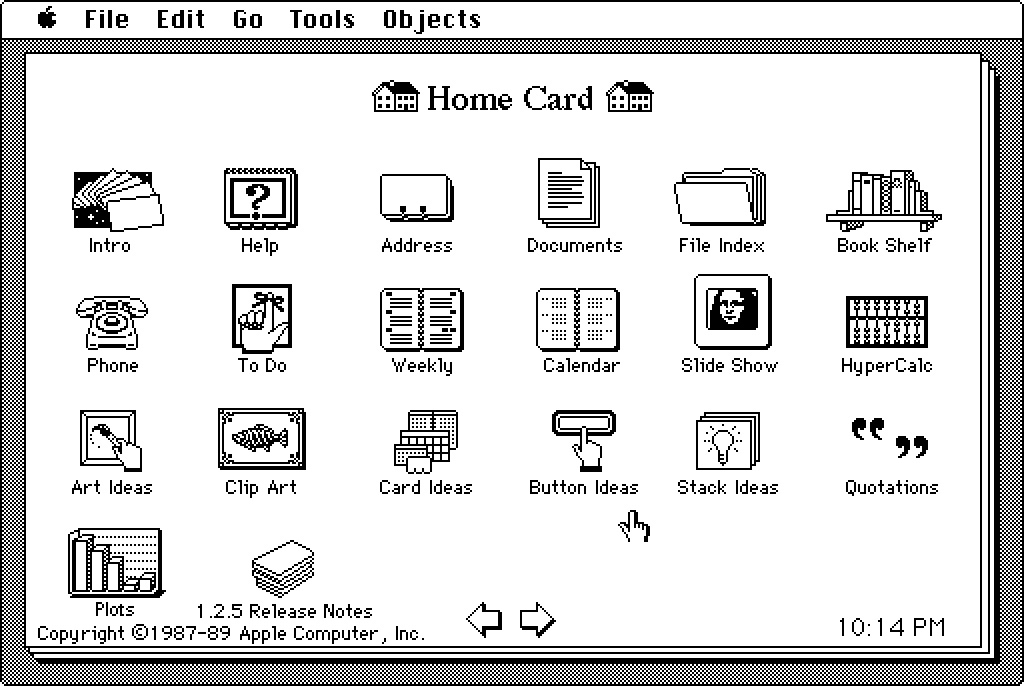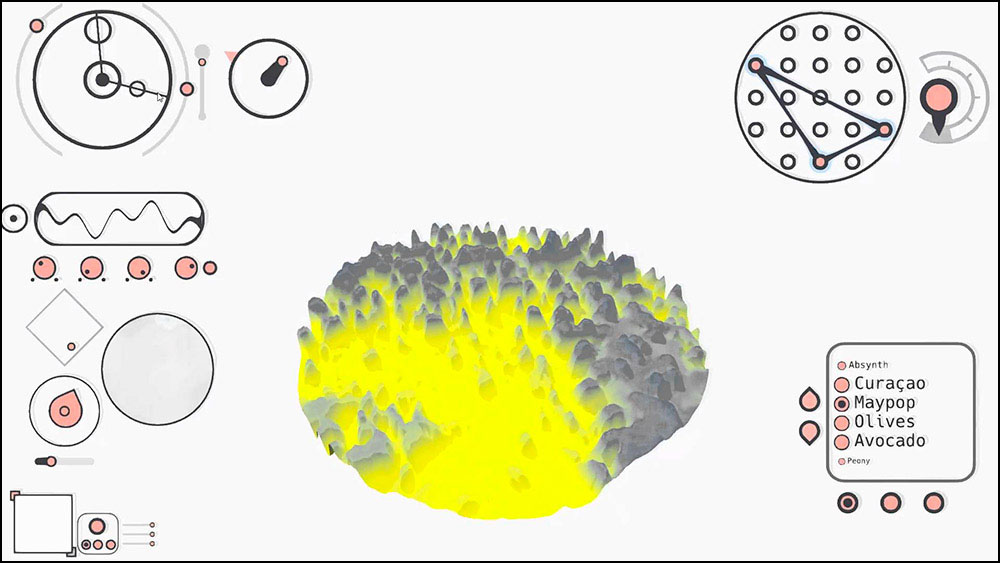When Muriel Cooper presented the Information Landscapes Project 22 Team: Muriel Cooper (dir.), Ron MacNeil, Henry Liberman, David Small. PhD students: Suguru Ishizaki, Louis Weitzman. Masters of Science students: Robin Kullberg, Ishanta Lokuge, Earl Rennison, Lisa Strausfeld, Jeffrey Ventrella, Yin Yin Wong, Xiaoyang Yang, Rob Silvers. at the 1994 TED talk in California to an audience of guests from the world of technology, she was at the height of her career. Behind the obvious novelty of her graphic interfaces that blew away the “superposed opaque rectangles” (windows) of traditional paradigms, those “information landscapes” synthesized the wealth of research, questions and experiments that she had been involved with for more than forty years. 44 Nicholas Negroponte, “Design Statement on Behalf of Muriel Cooper,” Chrysler Award for Design Innovation, original documents (1994).
Cooper, a Woman Designer at the University
It is crucial to take into account the very specific context in which these works were produced. Cooper was an exceptional designer and teacher. She worked outside the traditional framework of graphic design: her career, in its entirety, was spent at the Massachusetts Institute of Technology (MIT) and with the MIT Press publishing house (apart from a brief foray into the world of advertising). For forty-two years, Cooper was mainly surrounded by computer science pioneers, starting with Nicholas Negroponte, who introduced her to his area of expertise, and she managed to gain access to machines which were at that time inaccessible outside of universities. 55 Janet Abrams, “Muriel Cooper’s Visible Wisdom,” I.D. Magazine, 39 (1994), 55. She worked without backers and sponsors, and without any brief, producing objects well ahead of their time involving basic research in digital graphic design.
The Visible Language Workshop, a Bauhaus of Information 66 David Reinfurt, This Stands as a Sketch for the Future: Muriel Cooper and the Visible Language Workshop (Cambridge, MA: MIT Center for Advanced Visual Studies, 2007).
In 1973, at the age of forty-nine, Cooper was appointed as the first professor of graphic design at MIT. There, with designer and computer scientist Ron MacNeil, she founded the Visible Language Workshop, 77 David Reinfurt and Robert Wiesenberger, Messages and Means: Muriel Cooper at MIT (Cambridge, MA: MIT Press, 2014), 9. based on the methodologies and goals of the Bauhaus. 88 David Reinfurt, op. cit., 2.
In 1985, the Visible Language Workshop became one of the groundbreaking teams of the MIT Media Lab. Although Cooper herself never learnt how to program, her interest in computer science was heightened by the acquisition of new machines, whose graphic performances improved rapidly. 99 Janet Abrams, op. cit., 54. She reckoned that the “desktop metaphor,” developed since the 1970s by Xerox PARC researchers—and still in effect to this day—represented no more than a transitory state of man-machine interaction. 1111 Muriel Cooper, “Computers and Design,” Design Quarterly, 142 (1989), 17. She was forever exploring other paradigms in order to transcend it: her “information landscapes” are the most accomplished example of this.
Information Landscapes
Information Landscapes is the name of a series of projects undertaken over almost a decade at the Visible Language Workshop by Cooper and her students (in particular David Small, Suguru Ishizaki and Lisa Strausfeld): Typography in Space, Financial Viewpoints, GeoSpace, Interactive Calendar, Network Multiviews, Filtering the News, and Personalized Galaxies of Information. These “information landscapes” were produced thanks to the calculating capacity of the Silicon Graphics Reality Engine, a computer purchased by the MIT Media Lab for $250,000. 1313 Reinfurt, Wiesenberger, op. cit. Because it is currently impossible to consult them on a contemporary computer, I have had to make do with secondary and partial sources to analyze this work, including some very rare interviews given by Cooper towards the end of her life. The only accessible trace of the information landscapes is a short film, made as a tribute to her after her death. 1414 See: http://b-o.fr/info-land This difficulty in conserving software shows once again the fragile nature of the works of computer science pioneers, and may partly explain the lack of feedback regarding them.
The actual title, Information Landscapes, reveals Cooper’s ambitions. She managed to extricate graphic design from the printed plan, and take it into a space, an infinity of constantly evolving landscapes. The choice of the term “information” is also significant because it sets aside the nature of different media (text, image, sound, etc.) and focuses on their transversality.
Space, Time and Viewpoints
Graphic design came into being with the printed plan. It has been constructed around, or rather with, this restriction. Computer science blew away the boundary of the page. The screen is, of course, a delimited window, but with Cooper it became a dynamic, malleable element, just like our own human field of vision. For her, theater and performance would become the arts that would make it possible to think about graphic design in the Computer Age. 1515 Cooper, “Computers and Design,” op. cit., 14. These sources of inspiration, hailing in particular from the Bauhaus happenings, are one of the keys to understanding the way Cooper worked and thought. Through them, three features of the information landscapes are revealed: a three-dimensional multimedia space, a non-linear and non-unique time frame, and the reader’s active role.
From Page to Three-Dimensional Space
One of Cooper’s early decisions was not only to free herself from the barriers between different media but, on the contrary, to mix them. This was an innovative stance at a time when each and every medium had its own means of dissemination: books, radio, television, etc. For Cooper, creating a link between different media could only be achieved within a three-dimensional space. 1616 Ibid., 14. Plunging into this new space was a switch of paradigm that ended the unique point of view. In fact, on a two-dimensional plan, like a page, for example, the reader’s viewpoint has only a very slight influence. Two spectators put in two different places will have access to the same content. But in a space made up of three dimensions, like a landscape, the choice of viewpoint becomes crucial. The graphic designer no longer controls the infinite number of visual compositions likely to appear to the reader’s eye. So in the subproject Typography in Space  ) the plan becomes the prime element for the organization of information, making it possible to combine the properties of a two-dimensional space, while at the same time preserving those of the three-dimensional space. 1717 David Small, Suguru Ishizaki, Muriel Cooper, “Typographic Space,” Conference Companion on Human Factors in Computing Systems (New York: ACM, 1994), 437–438. Each plan corresponds to a paragraph of text. Their spatial arrangement creates connections between the different sections, thus engineering continuities and discontinuities of the idea, and highlighting the editorial work.
) the plan becomes the prime element for the organization of information, making it possible to combine the properties of a two-dimensional space, while at the same time preserving those of the three-dimensional space. 1717 David Small, Suguru Ishizaki, Muriel Cooper, “Typographic Space,” Conference Companion on Human Factors in Computing Systems (New York: ACM, 1994), 437–438. Each plan corresponds to a paragraph of text. Their spatial arrangement creates connections between the different sections, thus engineering continuities and discontinuities of the idea, and highlighting the editorial work.
Today, online newspapers retain a layout mostly inspired by printed matter, and rare are the articles which dare to combine different media beyond conventional image-text relations. One of the rare counterexamples in this field is a multimedia article in The Guardian about Edward Snowden’s revelations, which combines texts, videos, source documents and data visualizations. 1818 Ewen Macaskill, Gabriel Dance, “NSA Files Decoded: What the Revelations Mean for You,” The Guardian (November 3, 2013). [Online] http://b-o.fr/nsa However, unlike Cooper’s approach, all these media are based upon vertical volume, which consequently only offers a unique point of view.
Temporal Navigation and the Human Body
The exploration of this new and non-linear time frame does not depend on the designer: it is controlled by the reader through their browsing. Like a happening, which can never be identically reproduced, Cooper steps back from the fixed representation of information, preferring to encourage experience by exploring a new relationship between readability and the choice of point of view. For Lisa Strausfeld, who produced the subproject Financial Viewpoints this type of work is based on the metaphor “seeing is understanding.” She also stresses the importance of physical posture to the mechanisms of understanding. Her analyses refer to concepts hailing from the cognitive psychology of embodiment, namely the way we use our bodies to grasp information in the world, and disembodiment, which is defined by going beyond the physical body to explore new possibilities. 1919 Lisa Strausfeld, “Financial Viewpoints: Using Point of View to Enable the Understanding of Information,” Conference Companion on Human Factors in Computing Systems (New York: ACM, 1995), 208–209. This embodiment takes on several forms in the information landscape. In Financial Viewpoints, Cooper uses depth of field and various levels of opacity to enable several levels of information to coexist, while concurrently creating a contextual and temporary hierarchy. The limits of the physical body are exceeded: the reader literally flies through different layers of information, zooming in ad infinitum.
A New Role for the Reader
The experience of reading a printed book tends to be conditioned by the form proposed by the designer. In a three-dimensional space, Cooper might have adopted a similar approach by “scripting” the movement, as in a film. Her choice to enable more freedom of navigation puts the designer and the reader on an equal footing. The graphic designer becomes the person who comes up with “opportunities, paths and methods for a more independent user,” and readers, seeing themselves renamed “users,” become “capable of acquiring, exploring and collecting information on their own terms.” 2020 Markus Weisbeck, “This New World,” Frieze Magazine, 161 (March 12, 2014). This strategy asserts Cooper’s position that there is not just one way of interpreting information. From that point on, the task of communication has to integrate these multiple approaches within its very conception.
In the subproject GeoSpace, the user is in effect a wanderer who constructs his own space which can be browsed with a mouse. 2121 Ishantha Lokuge, Suguru Ishizaki, “GeoSpace: an Interactive Visualization System for Exploring Complex Information Spaces,” Proceedings of the SIGCHI Conference on Human Factors in Computing Systems (New York: ACM, 1995), 409–414. They can adapt its look to correspond with their intent, head at a run towards the information they are seeking, or explore the landscape in detail. Unlike the binary interactions of buttons and menus, Cooper proposes continuous dialogue with the content, which facilitates a progressive understanding. Nowadays the simple scroll has become the main browsing interaction on the Web, as is illustrated by the recent trend of parallax scrolling (nonuniform levels of information). It is nevertheless interesting to note that, due to its one-dimensional nature, this type of scrolling does not permit any active choice other than that of the time frame of the reading.
Interactive Calendar presents an interface based on forms drawn directly by the user: an arrow is drawn to move an object, a cross to delete an element, and so on. These dynamic interactions provided the possibility of new types of interfaces, based on the user’s intuitive actions. These principles were also developed by engineer Jeff Hawkins in his Graffiti program (1993), created to recognize handwriting drawn on the screen of a mobile terminal. 2222 Bill Moggridge, Designing Interactions (Cambridge, MA: MIT Press, 2007), 206.
Separating Content from Form
Cooper realized at a very early stage that computer technology would consolidate the variety of crafts involved in graphic design and consequently, she set out to redefine the role of graphic designers. In 1978, with Nicholas Negroponte, she coined the term “soft copy,” as opposed to “hard copy.” 2323 Ellen Lupton, “Fluid Mechanics: Typography Now,” in Design Culture Now: National Design Triennial, ed. Donald Albrecht et al. (New York: Princeton Architectural Press, Cooper-Hewitt National Design Museum, 2000). A new object of the computer age, “soft text” contained no typographical representation, thus ushering in the notion of “text flow.” It can be represented in an endless number of ways, depending on copy-and-paste functions in new contexts, from email to word processing.
This is a fundamental idea, which we find today, for example, in webpages, because they are composed using two distinct languages: structured data (HTML) and the set of rules governing the formatting of the data (CSS). However, even today this distinction remains very static; there is still a unique CSS file that corresponds to each HTML file, whereas Cooper was an indefatigable explorer of the myriad of ways one could represent one piece of information. The role of designers becomes all the more crucial. Data only becomes intelligible through the filter of design. 2424 Matthew Shen Goodman, “This Stands as a Sketch for the Future: Muriel Cooper’s Messages and Means,” Art In America (2014). [Online] http://b-o.fr/itw-cooper Cooper explored the abundance of possibilities when she designed the book Bauhaus 2525 Hans Wingler, Bauhaus (Cambridge, MA: MIT Press, 1969). by formatting the same content for four different media: print, poster, film and document stack, thus highlighting the many ways one can interpret the same content. She used film, for example, to “demonstrate the flow between the pages and her cinematographic approach to printed matter. 2626 Shen Goodman, op. cit.
In the subproject Network Multiviews, people connected to the network are represented in two ways: in photographic portraits arranged in a circle, or identified according to the locations of their offices. Similarly, in Financial Viewpoints, the same piece of information can be viewed as a figure, a bar diagram, or a curve. Each one of these representations informs and provides perspective on the data in question. The increased number of formats consequently augments the understanding of the information.
Filters, Systems and Processes
Another major change in information technology is the advent of streaming information. Cooper anticipated that it would quickly become impossible for designers to manually format the content which readers would have access to in real time. 2727 Cooper, “Computers and Design,” op. cit., 17. As a result, designers would have to come up with adaptive processes and structures that could be applied to data streams in real time.
“In our electronic environments, the volume of data in real time will exceed our capacity to manage it. The use of graphic design as a filter for this complexity of information—a way of making it both meaningful and expressive—is the main challenge of our research workshop.” 2828 Ibid., 23.
In order to format these data flows, Cooper became interested in the notion of a graphic “principle,” present in particular in the graphic charters of visual identities (logos, etc.) which function as a “paradigm of graphically expressed spatial and relational instructions that hierarchically organize data for the reader.” 2929 Ibid., 26. She drew her inspiration from the book Designing Programmes  , 56–57.© Lars Müller Publishers) by artist and designer Karl Gerstner, exploring graphic design from the standpoint of the “system,” mainly through the use of the typographic grid. Today, Conditional Design, a Dutch collective made up of Luna Maurer, Edo Paulus, Jonathan Puckey and Roel Wouters, is continuing Cooper’s intent to define and shape the process, and apply it to the field of graphic design.
, 56–57.© Lars Müller Publishers) by artist and designer Karl Gerstner, exploring graphic design from the standpoint of the “system,” mainly through the use of the typographic grid. Today, Conditional Design, a Dutch collective made up of Luna Maurer, Edo Paulus, Jonathan Puckey and Roel Wouters, is continuing Cooper’s intent to define and shape the process, and apply it to the field of graphic design.
In Filtering the News,  ) Cooper proposes that the reader browse a selection of press articles according to one of four viewing criteria provided: title, source, length of article, and press agency. Because it’s impossible to know the content in advance, the designer must create a system that takes all potential information into account. One must create flexible structures in order to preserve the widest possible field of interpretation, leaving it up to the reader to choose their own access.
) Cooper proposes that the reader browse a selection of press articles according to one of four viewing criteria provided: title, source, length of article, and press agency. Because it’s impossible to know the content in advance, the designer must create a system that takes all potential information into account. One must create flexible structures in order to preserve the widest possible field of interpretation, leaving it up to the reader to choose their own access.
Exploring New Technologies
Throughout her career, both in practice and as a teacher, Cooper put a relationship with technology at the core of her experiments. When she started to explore graphic design with computers, “creative” software did not exist. As a result, her students were encouraged to interact with computer programming. For her, it was important for designers to be part of the preparation of their medium and to be able to explore its different potential. Students involved in artificial intelligence worked together with graphic designers to establish links between the hands-on world of designers and the more “symbolic” world of programmers. 3030 Cooper, “Computers and Design,” op. cit., 22. Consequently, Cooper became involved with the issue of layout automation, which she saw not as a substitute for the designer, but as a source of new possibilities for designers and readers alike.
The subproject Personalized Galaxies of Information,  ) runs on an algorithm that extracts, sorts and organizes keywords in press articles. The program allows the reader to browse through dynamically generated terms, at several reading levels. Here, the designer creates the interface that provides meaning and puts the work of the algorithm in context. Moreover, Cooper imagined a dialogue between the algorithm and the reader, who could direct the system in terms of the filtering and organizing of information. 3232 Cooper, “Computers and Design,” op. cit., 17.
) runs on an algorithm that extracts, sorts and organizes keywords in press articles. The program allows the reader to browse through dynamically generated terms, at several reading levels. Here, the designer creates the interface that provides meaning and puts the work of the algorithm in context. Moreover, Cooper imagined a dialogue between the algorithm and the reader, who could direct the system in terms of the filtering and organizing of information. 3232 Cooper, “Computers and Design,” op. cit., 17.
Currently, when algorithms design layouts, it is often to replace designers, namely to program variables in their stead. For example, The Grid and its “artificial intelligence” provides the option of automatically cropping photos onto faces, a powerful decision which is transmuted into a mere “default element” rather than an act of design. 3333 http://thegrid.io Cooper had already demonstrated that it is crucial for designers to appropriate the algorithms and convert them into understandable and tangible objects that they can both create and configure, and at the very least use and control in the context of their production.
From the Visible Language Workshop to Processing
The issues which Cooper raised with her information landscapes have, for the most part, been forgotten about for almost twenty years. 3434 Catherine de Smet, Pour une critique du design graphique (Paris: Éditions B42, 2012), 18. Since the 2014 exhibition Messages and Means at the Arthur Ross Architecture Gallery did show the value of her work, one might wonder why the innovative principles that she explored are not being implemented today. One hypothesis is that information landscapes are complex to describe, and thus difficult to appropriate. In this respect, Cooper’s pioneering approach was similar to that of the Hypercard software package,  .© Apple) developed by Apple in the late 1980s, which gave users the possibility of creating extremely varied interactive contents. Hypercard was finally abandoned by Apple in 1994, as it was deemed too divergent from the paradigms existing in software designed for the general public.
.© Apple) developed by Apple in the late 1980s, which gave users the possibility of creating extremely varied interactive contents. Hypercard was finally abandoned by Apple in 1994, as it was deemed too divergent from the paradigms existing in software designed for the general public.
However, precisely due to their hybrid nature, these two projects turn out to be unsurpassed today in many aspects. The immobilizing force of the interface paradigms has probably prevented similar explorations. Regarding Information Landscapes, there is, in particular, the tenacious belief that three-dimensional interfaces are not viable for software packages and other “productive” applications. So today, the projects which most closely resemble Cooper’s works are perhaps to be found in video games, a domain that features diversified interfaces designed for the display of complex data.  Where “serious interfaces” are concerned, twenty years after the public presentation of Information Landscapes, we are still fairly and squarely in the world of opaque plans and the physical metaphors of paper and offices. While information today is generally formatted using animated interfaces, the user is still largely confined to a passive role, to whom data is presented in a linear and unilateral manner.
Where “serious interfaces” are concerned, twenty years after the public presentation of Information Landscapes, we are still fairly and squarely in the world of opaque plans and the physical metaphors of paper and offices. While information today is generally formatted using animated interfaces, the user is still largely confined to a passive role, to whom data is presented in a linear and unilateral manner.
Lastly, it was Cooper’s wish that designers should work with programming that has real repercussions. This approach was carried on by her student, John Maeda. A computer scientist, artist and designer, he succeeded Cooper at the MIT Media Lab. Then it was the turn of designers Casey Raes and Benjamin Frey, John Maeda’s students, who devised Processing (2002), whose online presentation is a direct tribute to Cooper’s works.